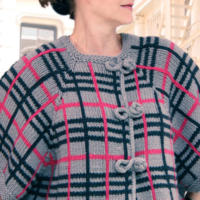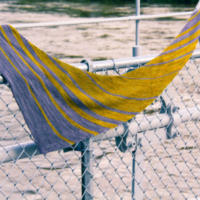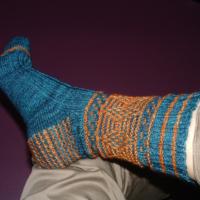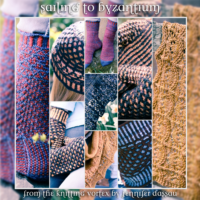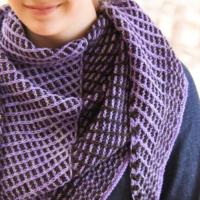
This graphic, topdown shawl begins with a garter tab, then is worked in narrow, two-color stripes with slipped stitches in reversed colors on each side of the central spine. The lower edging is a complementary slipped stitch rib which curves around the point and extends to each tip, emphasizing the strong linear elements of the shawl. Visually complicated but easy to work, only one color is used at a time, and the slipped stitches result in the pattern looking different on each half of the shawl. Increases on every row create a long v-shaped wingspan which accentuates the strong lines and showcases the changing optical interplay of colors. Techniques & Skills Used: garter tab CO, knit/purl, slipped stitch colorwork; this pattern is both written and charted. Size: 64” wingspan and 27” depth, after blocking. Yarn: Madelinetosh Tosh Sock (100% superwash merino wool; 395 yards/361m/100g), 1 skein each, MC and CC. Sample shown in MC Wood Violet and CC Victorian Gothic. This pattern may be adapted to any amount of yarn in two colors; see Designer’s . . .




